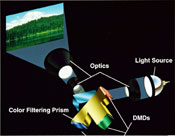
 |
 |
 |
| Single-channel Video |
The rich history of single-channel video art reaches from the earliest video experiments of the 1960s to the newest digital media works. Single-channel video, which refers to works that involve a single electronic source and display mode, poses unique challenges and conditions for collections. Artists are drawn to the conceptual, formal and cultural implications of video's reproducibility and variability - the very qualities that make video both more accessible and more complex to collect and preserve. The landscape for collecting media art has changed dramatically in recent years. Artists make works in multiple iterations for expanded contexts, galleries sell limited video editions in the art market, distributors develop archival practices. New strategies and standards are being generated to address the acquisition and preservation of single-channel video. This section outlines issues relating to collecting single-channel video, including best practices; planning; equipment and technical issues; budgets, and answers to basic but essential questions. Also included are interviews with key figures, including artists, archivists and curators, and a selection of articles and case studies. |